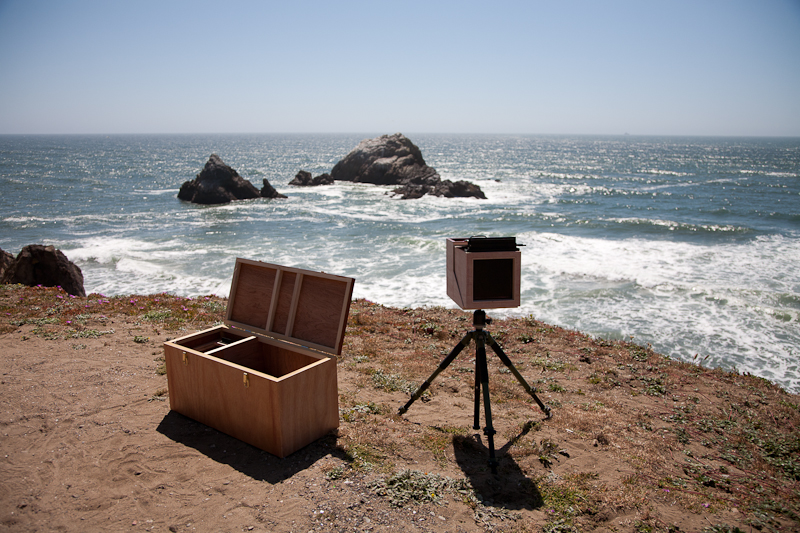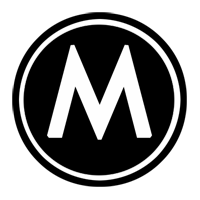An Image on Paper
Fox Henry Talbot, an English inventor from the mid-19th century didn't invent photography. That's credited to two Frenchman, Joseph Nicéphore Niépce and Louis Daguerre, who created a very grainy rooftop image from Paris, the first positive photograph. Daguerre would go on to create the now famous, daguerreotype, aptly named after himself, in which a copper plate is iodized, sensitized with silver, exposed and developed in mercury vapor. What you get is a positive image, a one-off. No negative. What Talbot did, was create photography as we know it today. The negative/positive process, by which a reversed image is created by exposure and any number of prints can be made from that negative. That's when photography was born. His process was coined a calotype, sometimes referred to as a Talbotype. Understanding what he had Talbot promptly patented his new invention, which required anyone using his techniques to pay him a royalty fee. Sounds a bit familiar. Because of this, and the fact that paper doesn't yield a very sharp image, other inventors were fast searching for alternative means of capturing life's likeness. And then in the early 1850's a brilliant french photographer, Gustave Le Gray, made improvements to Talbot's design rendering his patent useless as well as bettering the Englishman's process. Seeing the limitations in the calotype, Gray then developed what's called wet collodion, whereby glass is used as a film base rather than paper. This does two things, creates faster film speed and very sharp images. Virtually overnight both the daguerreotype and the calotype were made obsolete. The wet plate collodion process would reign supreme for the next fifty years, until New York businessman George Eastman would setup a little photography shop in upper state New York named Kodak. See, that wasn't so bad. My project follows Talbot in that I designed and built a sliding box camera similar to what he was using, but I'm actually doing Le Gray's calotype process instead. It's a bit more stable. Here's a breakdown of my first process.
Coat 20lbs architectural vellum in natural beeswax, iron clean soak the paper in a solution of potassium iodide, bromide, lactose and potato starch.
In a darkroom, soak this paper in a solution of silver nitrate and acetic acid (I'm using a 7% solution, or 7g silver nitrate to 100ml water).
Dry these in a dark place, and when dry load them into the film holder.
Expose under full sun, around f/16 at 8 minutes
Develop the exposed negative in a solution of gallic acid for over an hour. After which, fix the image in a solution of hyposulifite.
And voila, you have an image. This is the very definition of slow photography. This whole process takes about two days. And it's quite finicky.
So, on a bright bluebird day I set out to photograph the first negatives. I chose a series of sea mounts just off Lands End in San Francisco.
I had photographed a traditional BW of them in years past and thought the scene would look good on a paper negative. After hauling my box camera over a few cliffs, I set up and exposed for 16 minutes. The process isn't very light sensitive. The second image was taken at a Golden Gate Bridge overlook. A classic San Francisco scene I thought would yield something interesting. Why only two images. The film holder I built is mirrored, back-to-back spaces for each negative, like a traditional view camera film holder.
After getting back to the darkroom, I soaked these two waxed negatives in a gallic acid bath for over an hour. They look straight out of 1850 if you ask me. What's interesting is like modern film these negatives were largely objective to produce. Meaning other than the scene and composition choices, there isn't much creative input. The amount of variables is almost untestable, which is the point. Uncertainty adds to the creative nature of the medium. One of the things I so love about photography is the almost perfect merging of science and art. It can be so exacting in its need of certain variables to be constant, and yet at the same time those variables are producing something that speaks volumes.
The next four negatives I produced after these initial two have were all flops. Bad chemistry, overexposure, chemical fogging, the unpredictable nature of it is both rewarding and utterly frustrating.
This is all about process, history and understanding the roots of something. It’s about slowing the down, getting dirty and feeling photography. It’s about designing, building and curiosity and connecting with the lost foundation of an art form. Maybe in the end It’s about maddening frustration and sheer joy of a thing.
Photography is the bratty little sibling of the art family. One of the only art mediums invented and driven by market forces rather than artistic drive. First portraiture, later snap-shots. Revolutionaries like Brady, Adams,Ray, Stieglitz, working on the fringes of both the photographic and art worlds developed it beyond that and into a means of deep expression. Regardless, the founders of the medium as well as its biggest investors saw it as a marketable commodity, not as a paint brush. It still is (thank you Steve Jobs).
So why venture back into the past. Because regardless of the financial reasons photography was first developed, it has far surpassed mere profit. This exploration in the past is as much about interesting processes and unpredictable results, as it is about history.





